Prime Minister Boris Johnson: Does his cabinet reflect 'modern Britain'?
- Published
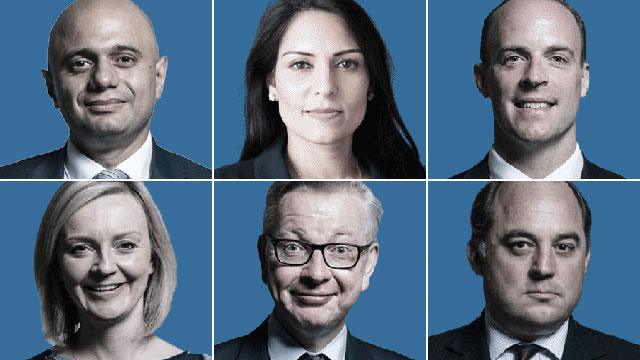
New UK Prime Minister Boris Johnson has appointed his top team, described as a "cabinet for modern Britain".
Do his appointments reflect British society? Here's how the cabinet breaks down.
About a quarter of the cabinet are women
Eight out of the 33 positions in Mr Johnson's cabinet - including those who are not full members - have gone to women.
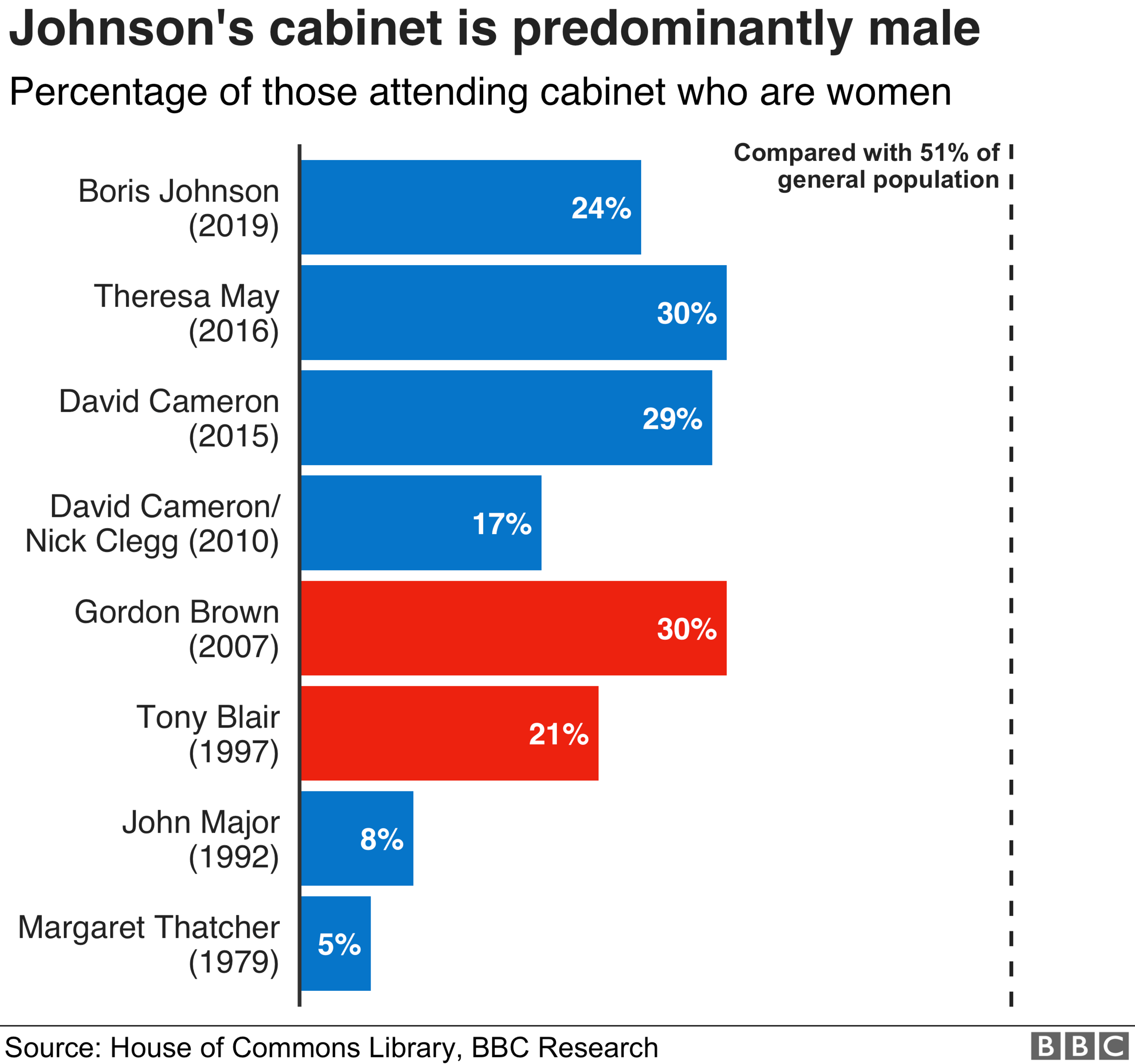
In terms of the overall number of women attending cabinet, never in British political history has the percentage reached 40%, although there have been times when it has gone beyond 30%.
The two highs were a stint under Gordon Brown, when almost four in 10 cabinet attendees were women (37.9%), and a brief period after Theresa May's January 2018 cabinet reshuffle, when the figure reached 34.5%.
Under Margaret Thatcher, just 5% were women - and that 5% was herself.
Women and girls make up 51% of the population (England and Wales), according to the 2011 census.

There are a record number of people from ethnic minorities
Mr Johnson has appointed four full cabinet members from BAME backgrounds (17%) as well as two ministers who will attend cabinet - a record for any government.
BAME (Black, Asian and Minority Ethnic) is a term widely used in the UK to describe people of non-white descent, external, as defined by the Institute of Race Relations.
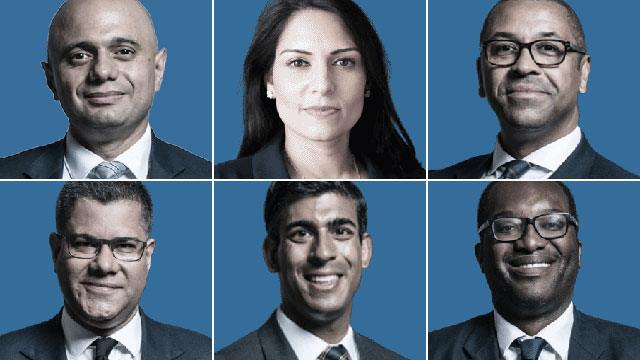
Clockwise from top left: Sajid Javid, Priti Patel, James Cleverly, Kwasi Kwarteng, Rishi Sunak, Alok Sharma
According to the Institute for Government, there have been only five full cabinet members from such backgrounds ever:
Paul Boateng, chief secretary to the Treasury under Tony Blair
Valerie Amos, international development secretary and leader of the House of Lords under Tony Blair
Sayeeda Warsi, minister without portfolio under David Cameron
Sajid Javid, secretary of state for culture, media and sport and secretary of state for business, innovation and skills under David Cameron, as well as secretary of state for housing, communities and local government and home secretary under Theresa May
Priti Patel, secretary of state for international development under Theresa May
In addition to that, Patricia Scotland attended cabinet as attorney general and Sadiq Khan attended when his ministerial responsibilities as transport minister were on the agenda - both under Gordon Brown.
Some 14% of the population in England and Wales come from ethnic minority backgrounds, according to the 2011 census.

More than half were privately educated
Some 64% of those attending cabinet under Mr Johnson attended fee-paying schools.
That's the highest percentage since John Major, when 71% had been educated privately.
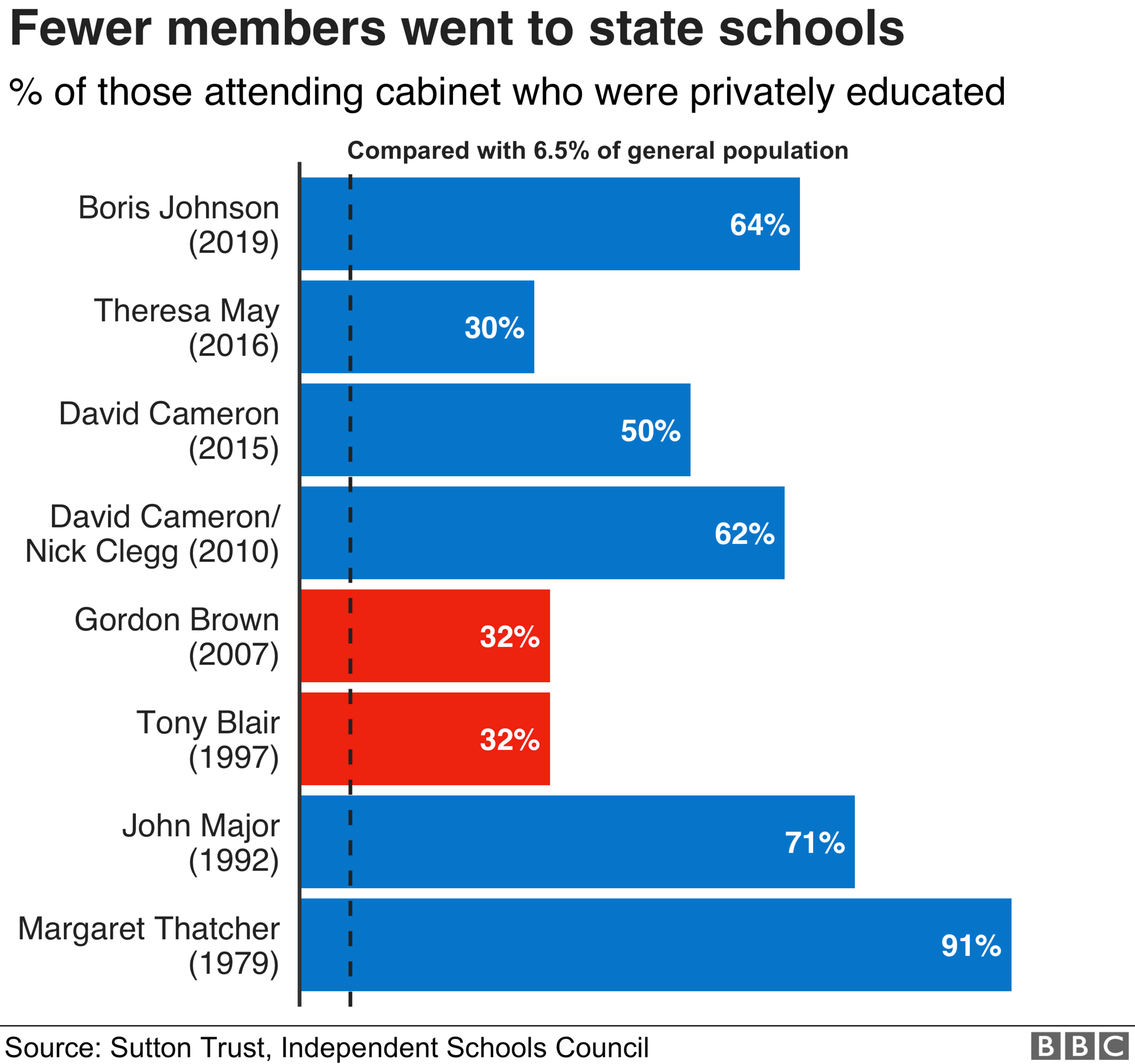
Some 27% of the new cabinet went to a comprehensive school, while 9% attended a grammar school,, external according to the Sutton Trust.
The lowest number of state-educated cabinet members since 1979 came under Margaret Thatcher, when 91% had attended fee-paying schools.
Just 6.5% of the wider UK population attend private schools., external
During the Labour years, 32% of the cabinet were privately-educated.

Almost half went to Oxbridge
The number of cabinet ministers who attended Oxford or Cambridge has risen, from 44% to 48%. This includes Theresa Villiers, who completed her undergraduate degree at Bristol, but her masters at Oxford.
A total of 44% of Theresa May's first cabinet went to Oxbridge, but this figure rose to 48% in her reshuffle of 2018.
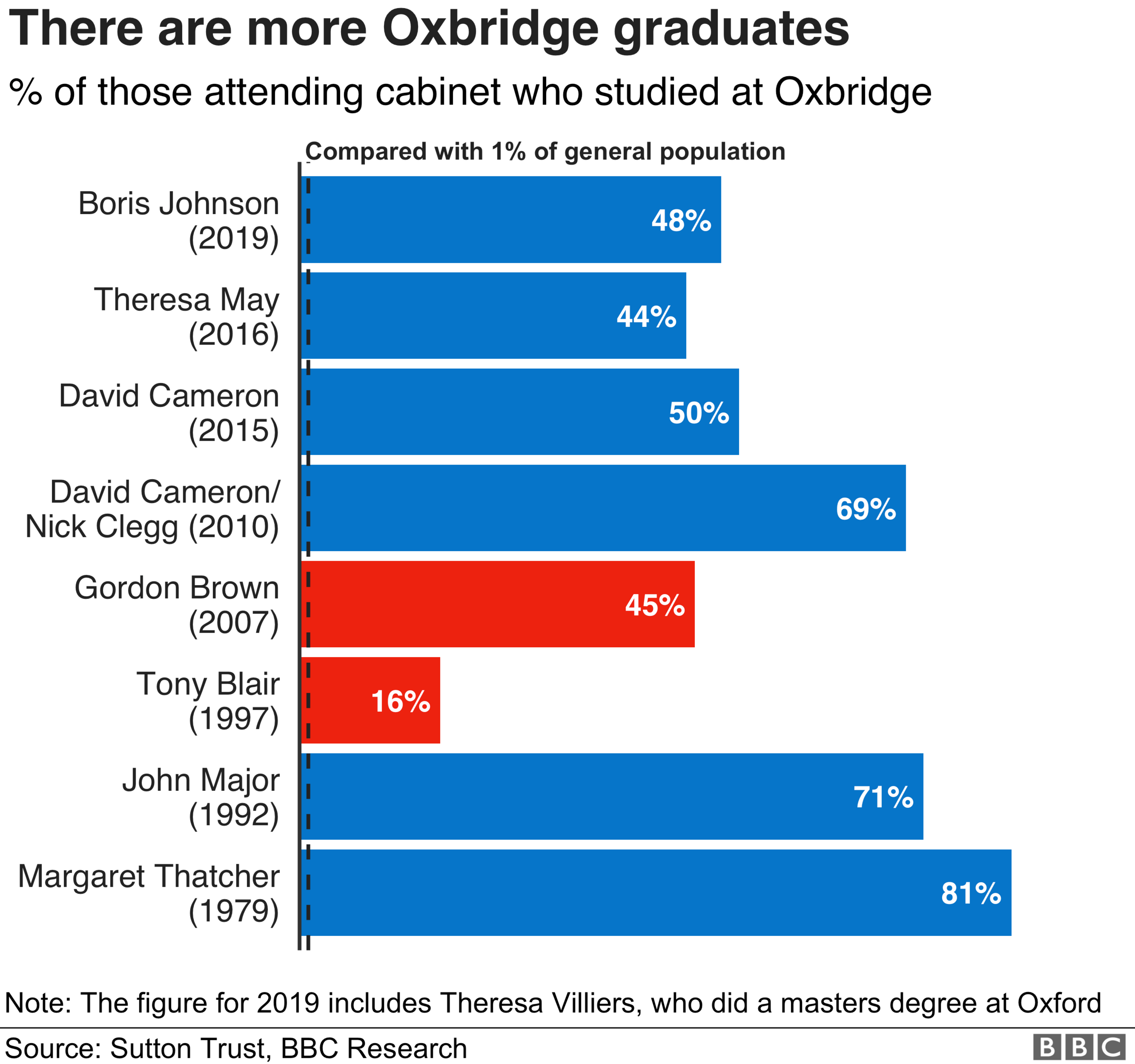
Both figures were still lower than David Cameron's 2015 cabinet (50%) and the 2010 coalition (69%).
Just 1% of people in the UK graduate from Oxford or Cambridge.
With the exception of Gordon Brown, every prime minister since 1937 who attended university was educated at one institution - Oxford. Mr Brown attended the University of Edinburgh.
By Mike Hills and Lucy Rodgers
- Published14 February 2020
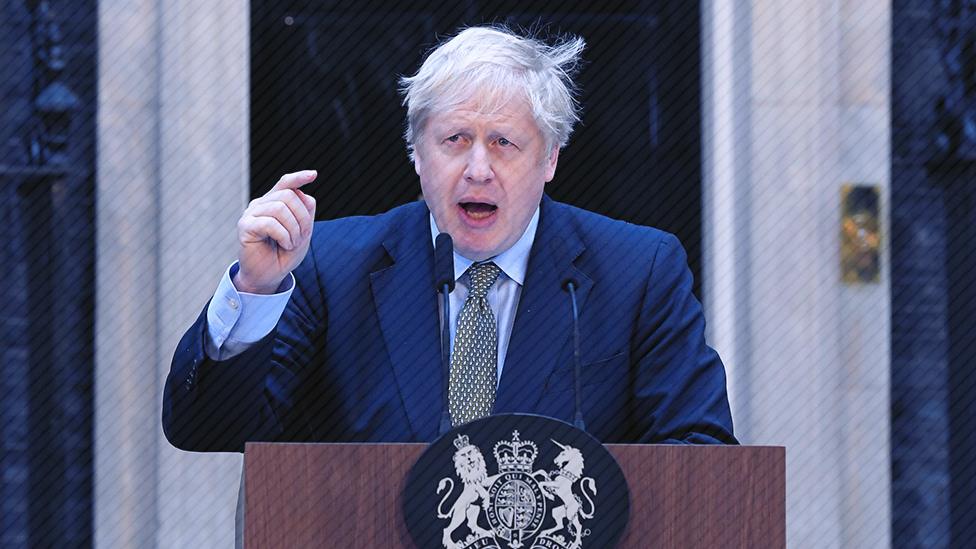
- Published25 July 2019
- Published14 August 2019
